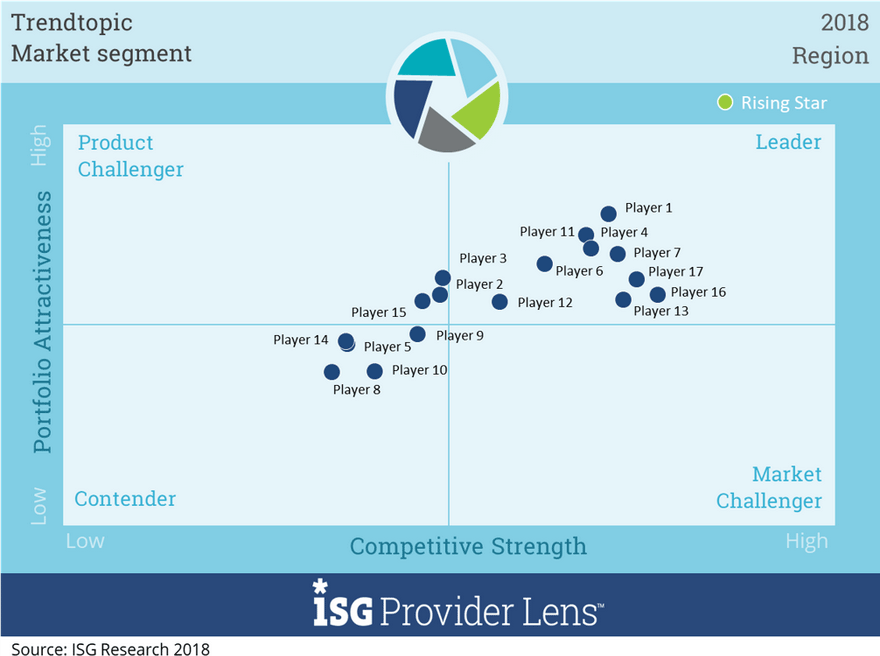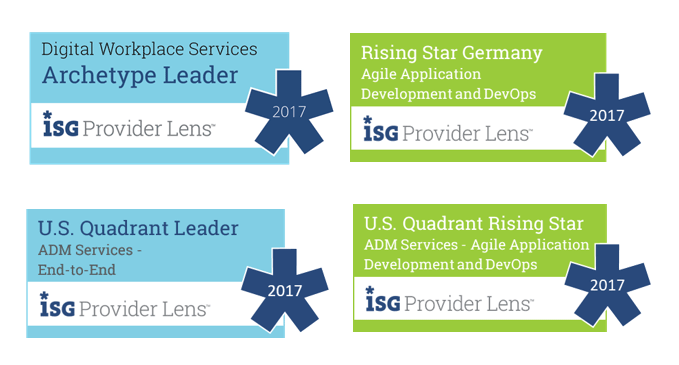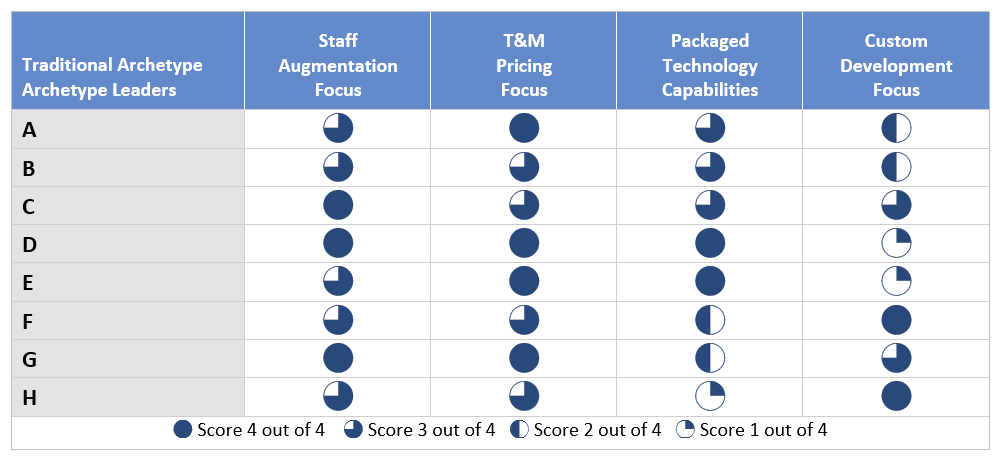ISG Provider Lens™ Research (Archetype & Quadrant) are dedicated studies of relevant offerings related to specific IT or BPO topics or service lines over multiple regions (see “IPL Project Plan” for details). Leading vendors and service providers are evaluated and positioned, based on a transparent methodology.
The studies provide IT vendors and providers an informed base of data and research to enable them to compare their own offerings with those of relevant competitors and to reveal strengths and weaknesses as well as competitive differentiators and unique selling points. Our study serves as an important decision-making basis for positioning, key relationships, and go-to-market considerations. ISG Advisors and enterprise clients also leverage information from these reports in evaluating their current vendor relationships and potential new engagements.
Vendor positioning is based on a neutral and independent research and evaluation process. Participation in the study is FREE OF CHARGE. Vendors can purchase reprint rights of the study for marketing, press and sales purposes only AFTER the study has been completed.
We create market transparency
| Independence | Self-funded Provider Lens; vendors may purchase the right to market the results at the same time or after the study is published. |
| Topical relevance | Cloud, Social Business, IOT, Security, Digital Workplace, etc. are covered. |
| Country-specific relevance | Allows local vendors to be included. |
| Practical relevance | The study includes a summary of the leading vendors’ key information as well as the customer’s specific experiences. |
| Length of research | Through an annual research process for each study. Over 4 – 5 months. |
| Comparability | The research methodology allows us to position vendors by competitive strength and portfolio attractiveness while also factoring in information from various ISG data assets (e.g., contract knowledgebase). |
| Company-specific | For users, weightings based on priorities and individual demand can be adjusted for service provider and solution evaluation within a project. |
ISG Provider Lens™ Quadrant Study – Global & Regional
The ISG Provider Lens™ Quadrant studies provide an excellent view of the top players in the defined country, region or globally.


ISG Provider Lens™ Archetype Study – Global
These strategic reports support improved awareness, knowledge, and decision-making regarding IT and business service providers’ capabilities and positioning.
The new ISG Provider Lens™ Archetype studies provide a means to align sets of ISG-identified client requirements with known provider capabilities in such standard outsourcing areas as ADM, FAO, digital workplace etc.
Figure 1: Sample ISG Provider LensTM Study Provider Listing

Increased Visibility
This is a channel to increase the visibility amongst ISG advisors and enterprise clients.
Improved Reach
ISG advisors have worked on over 56,000 outsourcing contracts, valued at approximately $400 billion USD, during client engagements. This information is widely used during RFI/RFP engagements.
Increased Opportunity
Increased possibility of being shortlisted and getting invited to ISG advised deals.
Comparability
The ISG Provider Lens™ methodology allows us to position providers by competitive strength and portfolio attractiveness within each Archetype.
In these studies, client objectives are organized by “archetypes” that summarize key requirements typical for each point in an enterprise maturity lifecycle. Each report identifies between four and six archetypes that represent common circumstances which we encounter in our work with clients and with service providers.
ISG Provider Lens™ Archetype reports are not prescriptive, nor are they rank-based.
They provide a means to help align buy-side needs with provider-side capabilities to reduce costs for both sides. These reports simply present service providers’ known capabilities in the context of clients’ typical engagement needs.
